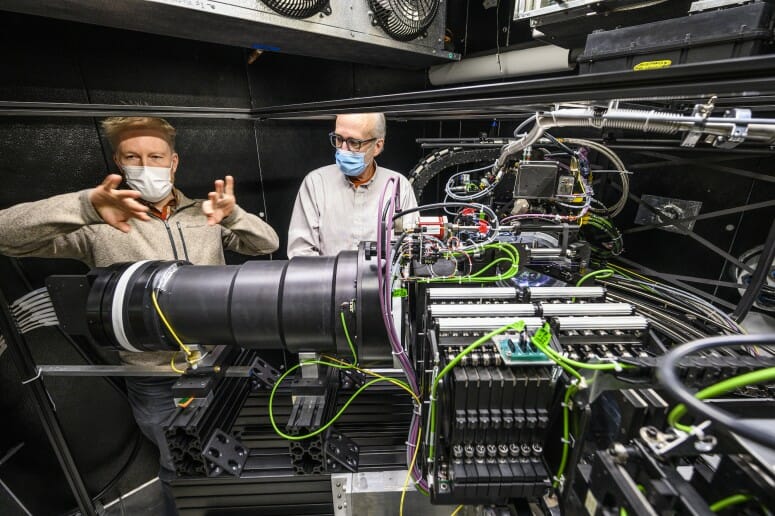03 Feb UW-built instrument will enhance views of distant galaxies

Instrument engineer Mike Smith, left, and senior scientist Jeff Percival describe the functions of the spectrograph they designed, built and programmed. PHOTO BY: JEFF MILLER
A near-infrared spectrograph — an instrument that splits light into its individual colors, or wavelengths, to form a rainbow-like spectrum — will soon be shipped to South Africa from UW–Madison. The next-generation instrumentation, custom-built by staff in UW–Madison’s Washburn Astronomical Laboratories, just passed pre-shipping review and is on schedule to be disassembled and soon shipped for installation and use at the Southern African Large Telescope (SALT) in the remote, desert highland of the Karoo near Sutherland, South Africa.
The principal investigator, senior scientist Marsha Wolf, tells us why a telescope needs a spectrograph, why we’re sending one to South Africa, how it will be used, and why it’s important to the UW.
Related: More information, photos and video about SALT and UW–Madison’s involvement in our award-winning multimedia feature Origins.



